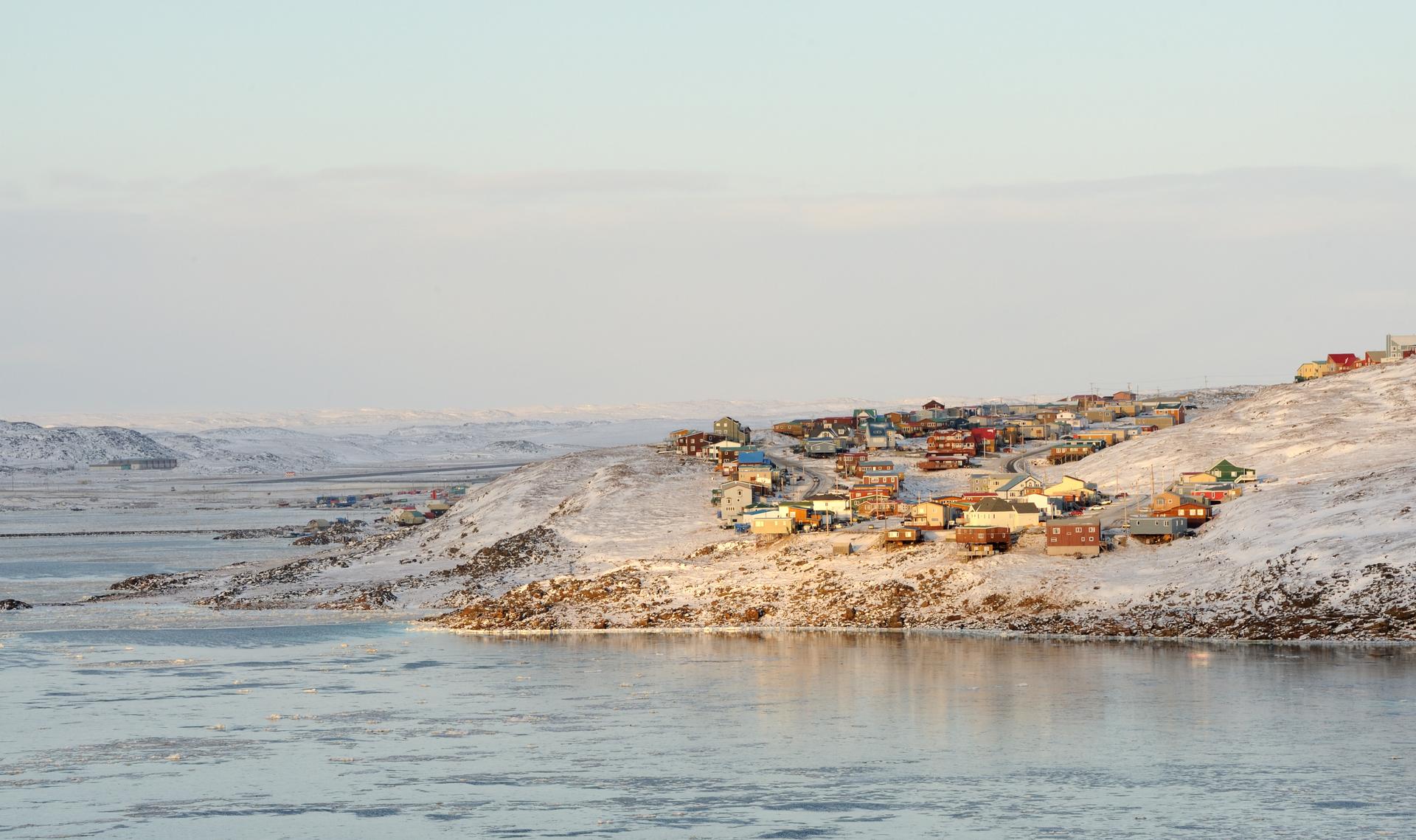Faced with climate change, Canadian Arctic residents fear their way of life is melting away
In the town of Iqaluit, all the buildings and roads were designed to sit on permanently frozen ground. But as temperatures rise, the permafrost is melting and homes are sinking.
Life is changing quickly for the native Inuit people of the Canadian Arctic.
The territory of Nunavut lies in the northernmost reaches of the globe. Iqaluit, the capital, is just 200 miles south of the Arctic Circle. And it’s warming at twice the global rate. There are now shrubs where once there was only ice. The town's buildings were designed to stand on permafrost, and now, as the ground thaws, those structures — as well as roads and runways — are sinking and wearing away.
While those daily reminders are the new normal in the north, politicians are still trying to figure out how to curb emissions and tax polluters. In May 2015, the conservative government under Prime Minister Stephen Harper introduced a non-binding carbon reduction plan which they submitted to the Paris Climate Agreement. The plan calls for Canada to cut emissions by 30 percent of their 2005 levels by 2030.
To accomplish that, the nation would introduce a carbon pricing plan, tax emitters, and phase out coal fired power plants. In the year and a half since Paris, a new Liberal government under Justin Trudeau has also adopted the plan. Speaking in December atparliament, Trudeau gave provinces a choice: either a carbon tax or cap and trade. Under the latter scheme a limit is set on allowable carbon emissions and companies either must pay penalties for exceeding that limit or can sell off credits if they are under. The national carbon tax would start at $10 per ton in 2018, and rise each year to $50 per ton in 2022.
“If neither price nor cap and trade is in place by 2018, the government of Canada will implement a price in that jurisdiction,” Trudeau said in the House of Commons to applause, and added, “Because pollution crosses borders, all provinces must do their part.”
So far, it’s been impossible to pass binding national laws in Canada because of a pushback from industry. They argue when Canada’s biggest trade partner and business competitor — the US — is one of the largest emitters of greenhouses gases in the world, implementing stringent climate policy for Canada is a political and economical gamble. Brad Wall, Saskatchewan premier, voiced his concern about Trudeau’s sweeping legislation.
“Let’s not be naive as Canadians. This is our number one, not just trading partner but competitor for investments in energy…and we need to be competitive with them,” he says.
Putting a price on carbon threatens cross-border industry for Canadians if Americans don’t adopt the same price.
“Those businesses argue that this will put us at a competitive disadvantage with the election of the Trump government," says Kathryn Harrison, a professor of political science at the University of British Columbia. "And so, we can expect greater political opposition to Trudeau’s agenda.”
But some of North America’s most progressive climate actions are happening at the province-level; and they’re even pairing up with US states. British Columbia adopted a carbon tax. The government of Quebec joined a cap and trade program with California. Ontario, which has already phased out coal fired power, is set to follow.
Moreover, the Paris climate agreement, which Canada ratified, has also encouraged the government to move towards emissions reduction. Pro-environment Parliamentarian Linda Duncan, says despite the Paris agreement not being binding, “we will be holding the government’s feet to the fire to actually be taking action.” She represents citizens in Edmonton, Alberta, the biggest city next to Canada’s oil fields. Her province is diversifying toward green energy and while she says the federal government is mouthing the right policies, “too much action to deliver on climate reductions are downloaded to the provinces and municipalities.”
Her calls for action have taken a new urgency in Canada’s Arctic regions. In Iqaluit, if sagging streets and runways aren’t bad enough, they have a brand new threat to worry about as well: Some uranium mining companies are concerned about thawing soil releasing unsafe levels of radiation.
